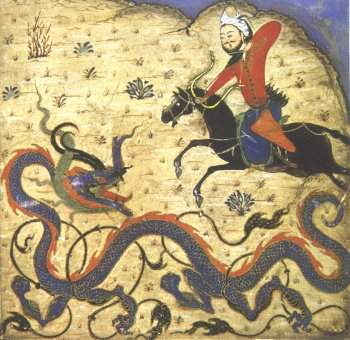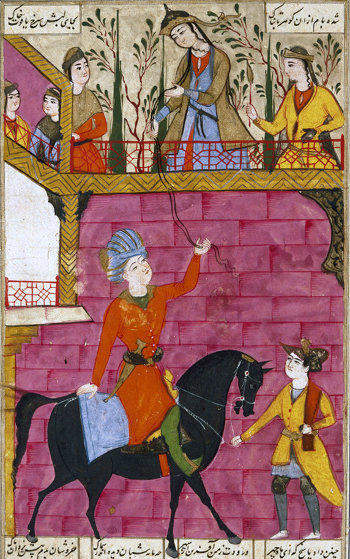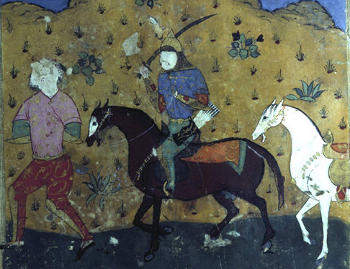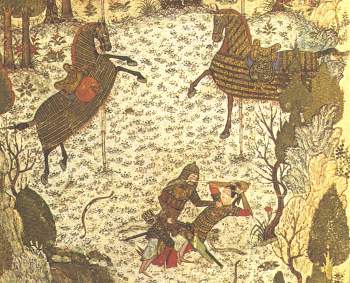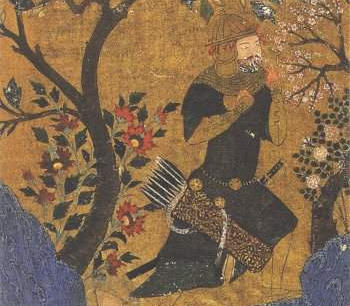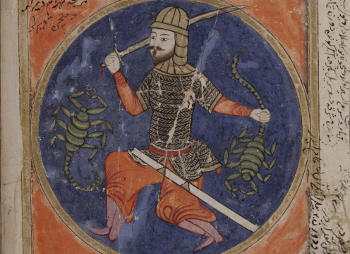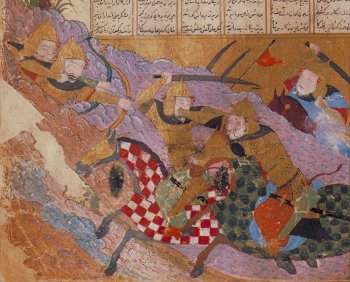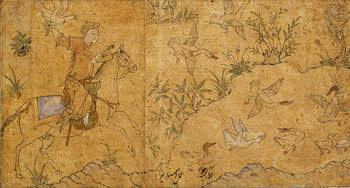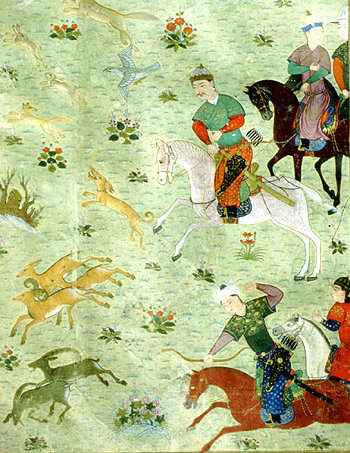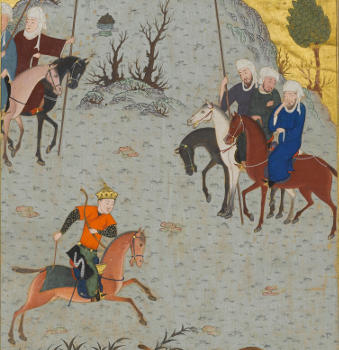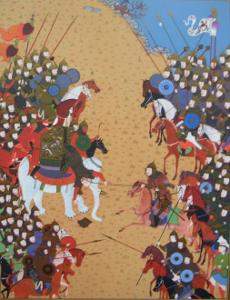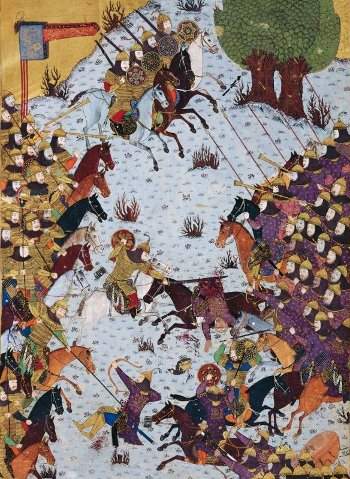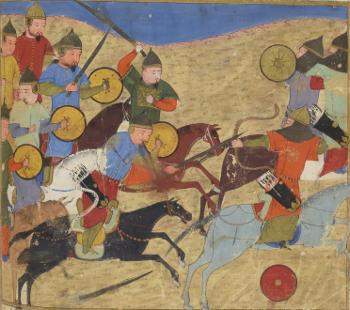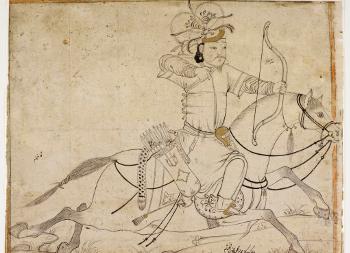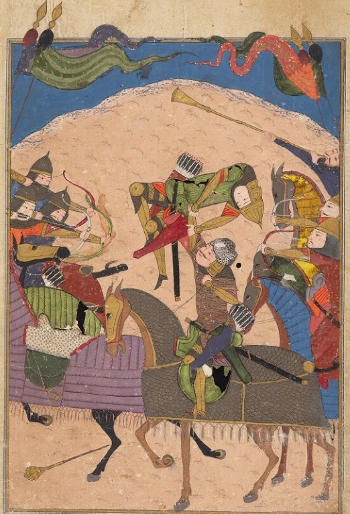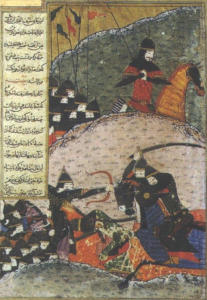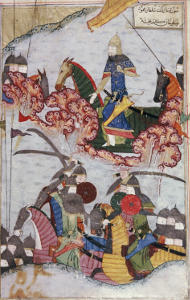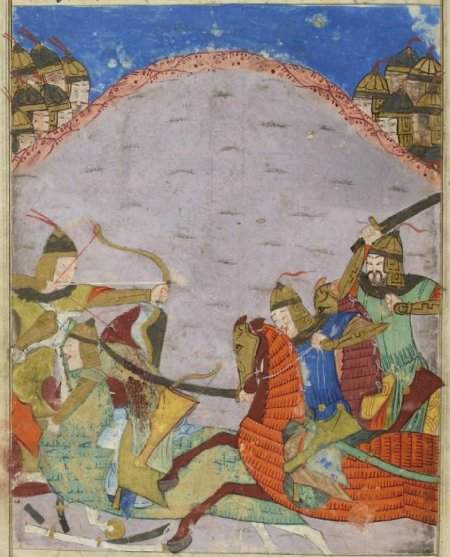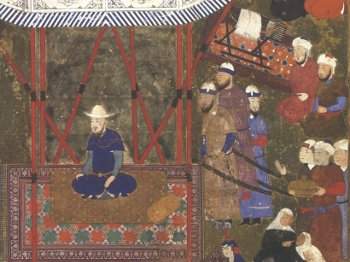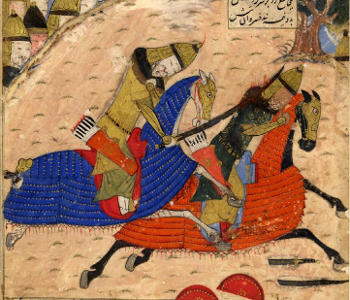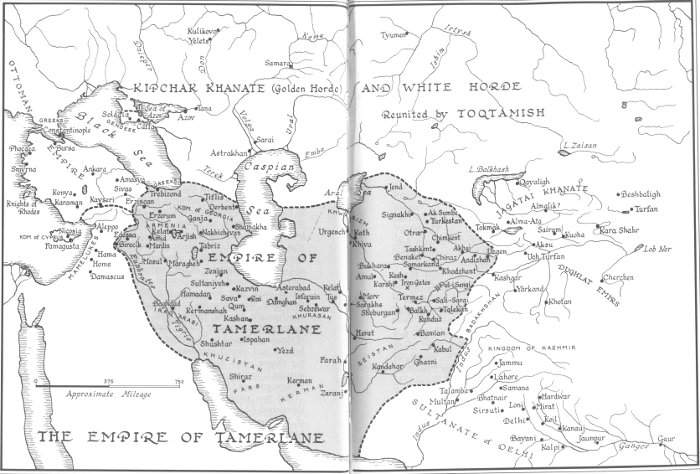You can support these web-sites by donating: or by making your Amazon purchases after clicking a link below: amazon amazon.co.uk amazon.es amazon.fr amazon.de |
Timurid Soldiers - Page 1
Page 2 - Timurid Soldiers and Turkmen successors of the late 15th and early 16th centuriesClick to see a larger image.
'Darab taken prisoner' in an Anthology of Iskandar Sultan. Timurid Shiraz, 1410AD. Gulbenkian Foundation, Lisbon, p.166.
More illustrations from Baysunghur's copy of the Shahnama by Ferdowsi, 1430
More illustrations from the Jami' al-Tawarikh of c.1430AD
'Book of Fixed Stars' (Kitāb suwar al-kawākib al-ṯābita)
by ‛Abd al-Rahman ibn ‛Umar al-Ṣūfī., BnF ms Arabe 5036, c.1430-1440, Samarkand.
Timurid Soldiers from Tarīḫ-i Ğuvaynī. Conquest of the World, 1438.
Timurid Soldiers from Muhammad Juki's copy of the Shahnamah by Ferdowsi, early 1440s.
The Timurids and the Turkmen
